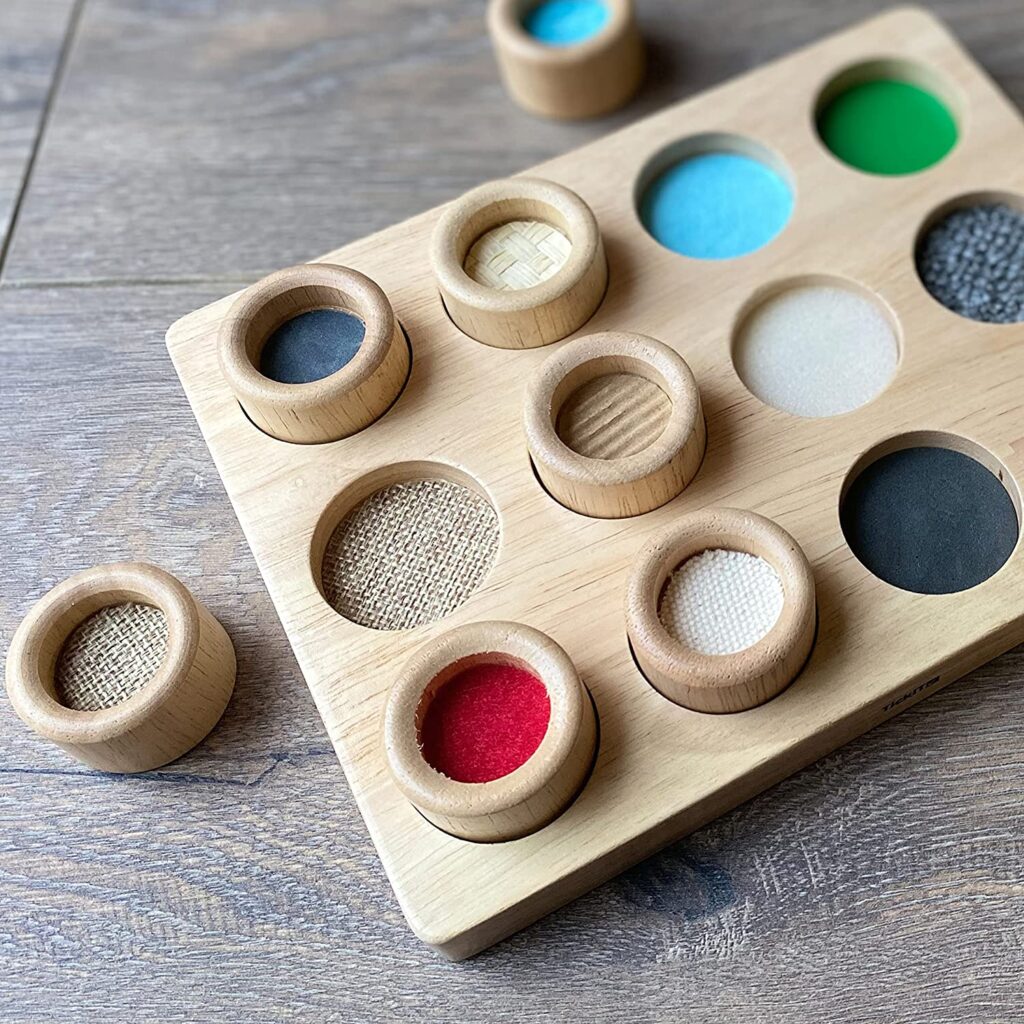
Using texture with my students is a very important step in their learning. Texture makes work interesting, it helps desensitize students to touching things, and it helps students with visual impairments participate in their work in new ways. I’m going to talk about 3 ways to use texture in the multiple disabilities classroom.
((This blog post contains affiliate links for your convenience. You don’t pay any more by clicking my link (and I actually find the best prices for you!) but I make a small commission off of sales. This helps me to test out more materials and bring you more quality content. Thanks for supporting my little blog!))
Puzzles, Books, More
One of the foundational skills my students need to learn in matching. How does this work with a student that has a visual impairment? Well, we use texture! Texture works well with all of my students because in addition to texture I also implement color, shape, and sound. We love using textured puzzles. Textured puzzles, like the one below, help us have conversations about what is going on in a puzzle. This goes for books as well. A student can find the hands and can feel the hands like in the book below. This helps my student connect the object to what they are learning in my multiple disabilities classroom.



Texture Boards
Texture boards are an amazing way to incorporate different textures. My students often come to me tactile defensive, which means they are very reluctant to touch things. Bring and interesting texture boards encourage students to feel with there hands and touch new things. If we are going to learn, we need to be comfortable interacting with various objects in our environment.


Communication
Last, but certainly not least, we use texture in communication. We use tactile schedules and cards to help students communicate and understand different parts of their day. I actually wrote a blog post here detailing how to make your own tactile pieces. We use the cards shown below and 3D printed textured pieces from project core for communication. This helps students that have visual impairment, need more concrete representations, and need stimulation to begin communicating and learning.



These are the 3 ways to use texture in the multiple disabilities classroom that I use the most. You can make any of these things on your own! I was in a position that I could buy these things from various places, but I have also adapted my own books, puzzles and activities with different textures for students to use. I hope you find this helpful!




